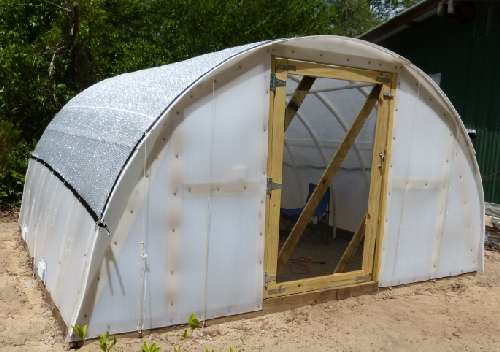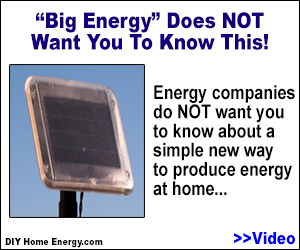Pay attention, survivors — Hydroponics allows for up to ten times as much output than traditional soil farming. Bigger Plants and More Food for the Table. For a family living during uncertain times, that means being able to produce more food, faster, and not being dependent on traditional farming methods. And the bonus… it can all be done “indoors.” Discover hydroponic farming, aquaponic farming, and how a survival greenhouse can save your life …
You may have felt this sense of helplessness if you live in a hurricane zone. At the first prediction of a threatening storm, most folks head on to the nearest market and buy up all the food and disaster supplies they can get their hands on. And this is what results:
Catastrophic Crisis Results in Widespread Food Shortage
Empty Store Shelves
Long Lines for Government Handouts
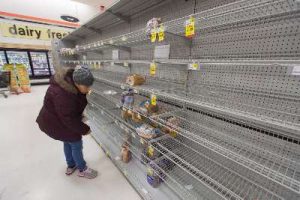
And if you don’t live in a storm zone, you probably haven’t given this issue much thought. Perhaps you should develop your own disaster-preparedness plan no matter where you live! You don’t want to find yourself without food in the event disaster does strike, from any cause.We have come up with what we feel is an ingenious way to “be prepared”, and we call it a “Survival Greenhouse”. Although a greenhouse makes the best sense for cold climates and urban or suburban dwellers, ANYBODY can benefit from having a greenhouse. Our Survival Greenhouse is versatile and adaptable. You could fill it up from wall to wall with your favorite hydroponic garden systems, or even use container gardening with soil, if you prefer.
Growing lots of healthy, delicious, poison-free produce for your family is immensely satisfying, and a worthwhile endeavor; whether you find yourself in the middle of a disaster or not.
Why We Feel Hydroponic Gardening is Best for a Greenhouse
Hydroponics is the growing of plants without soil. The plants are usually placed in “growing beds” that may be filled with gravel or other inert material, called planting medium. Often clay balls, rockwool, coco coir or perlite are used, because they do not significantly alter the nutrient solution.The plants get the nutrients they need from a water-based solution which floods or is dripped to the beds or plant pots. Since perfect nutrition is delivered right to the plant’s roots, it does not have to spread out far and wide and expend lots of precious energy looking for food, as it does in soil. This leaves the plant much more energy to expend on crop production, and with amazing results.
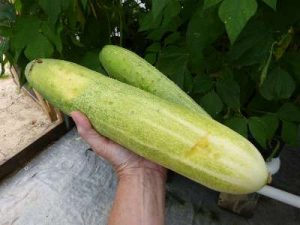
Hydroponics Can Magnify Your Farming Output
Yields in hydroponics can be as much as ten times greater than in soil culture; making this gardening method ideal for getting the most produce from your limited greenhouse space.For this reason, we highly recommend the use of hydroponic gardening methods for your Survival Greenhouse. Our Survival Greenhouse Guide provides all the information you need to set up any (or all) of the following systems:
• HydroPad PVC Stand
• Ebb & Flow
• Top Feed Bato Buckets
• Lettuce Raft
• Bubbler Bucket
Growing Up
Another very important concept in hydroponic gardening… Although you can place individual plants very close together due to the nature of high-quality nutrients and small root systems, the one absolute advantage to this gardening method is… GROWING UP!The best way to do this is to plant several vining crops, provide support for them to grow UP, all the way to the ceiling!
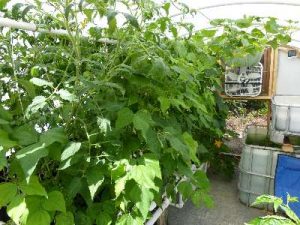
What About Aquaponics?
Tucked away in a corner of our Survival Greenhouse sits an aquaponic tank, which keeps a constant supply of Tilapia going and growing. Aquaponics is a little more challenging than hydroponics, a definite “learning curve” for us, but once you got it, you got it!What is aquaponics? Aquaponics refers to a system which combines conventional aquaculture (fish farming in tanks) with hydroponics (cultivating plants in nutrient fluid instead of soil), in a symbiotic relationship. The fish reside in a low tank, while a hydroponic gardening bed sits on top of/above the fish tank. The fish waste provides nutrients the plants need (nitrates), and the plants, in processing these nutrients, help purify the water the fish live in.
Could I Really Build a Solar Powered System?
Sure you can! We did!All of the electrical equipment we use in our greenhouse can run off our home-built solar system, and that includes:
4 Aerator pumps for nutrient reservoirs
2 Timers for pond pumps
2 Pond pumps and
Fans, for circulation and exhaust
Solar power allows you to run the greenhouse, 24/7, without using electricity; and it provides emergency power “off the grid” so you can continue to grow and provide food for your family, without interruption! We are talking about loss of electricity due to storms, or other power grid failure from any cause!
Supplemental Heating & Cooling
There are many passive and low-cost ways to increase the temps inside your greenhouse in the winter. We discuss how to:• Site the greenhouse to take advantage of the sun’s free energy
• Strategically place insulation to keep heat in the greenhouse
• Use certain colors inside the greenhouse for heat conservation.
• Build a “Heat Sink” to store heat during the day for use at night with plastic milk jugs Summer heat can be a problem in many areas. Learn how to extend your growing season or even grow food year-round by:
• Adding shadecloth
• Making home-made cooling walls (evaporative system)
• Increasing ventilation with roll-up sidewalls, circulating fans and a greenhouse exhaust fan
• Add an inexpensive misting system
A Vegetable Garden is An Absolute Must
For any prepper or survivalist, or anyone interested in reducing their reliance on “the grid”, a vegetable garden is an absolute must. There is no more effective way to become self-sufficient with your food needs. You can stockpile freeze-dried and dry-stored foods for added insurance. But nothing would keep your family healthier and happier in times of need than having fresh veggies on the table.And going one step further and building a greenhouse extends your produce potential in a substantial way. When you’re looking for ways to make your homestead more self-reliant, a greenhouse is a great way to do it. And if you can go off-grid with solar-powered equipment, you are way ahead of the pack.
We believe in the survival greenhouse concept, and recommend it for anyone with a 12×12 foot plot of earth on which to build one. We have built what we feel is the best structure at the best price, and written an excellent ebook to tell you how to build one, too. It’s as simple as that.
Click on the ebook below for more photos and to learn more!

